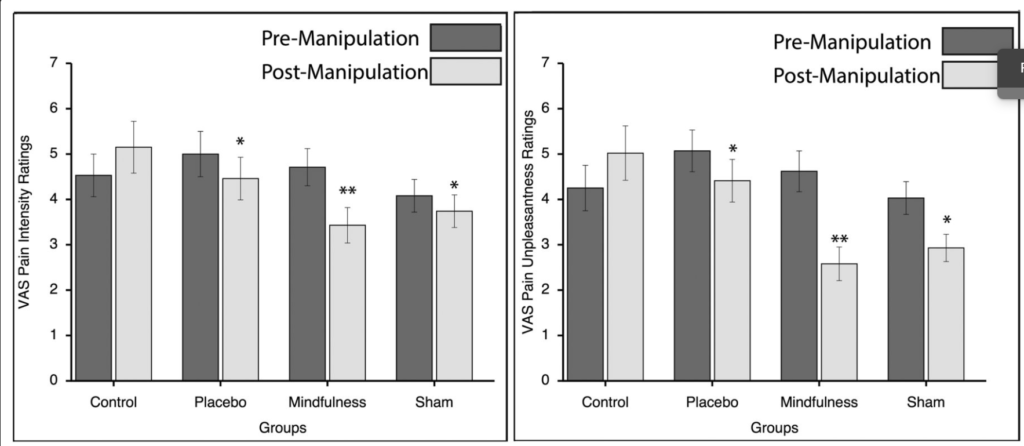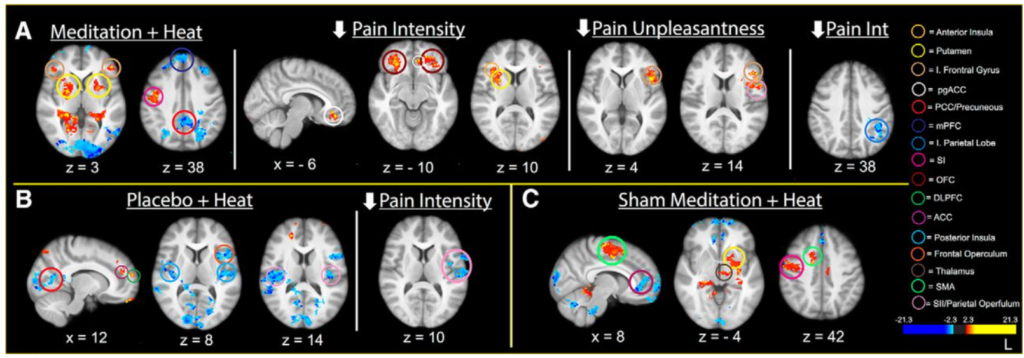What is something that could change your life – and only for the better? It is something that has never hurt anyone, there are no negative side-effects. Anyone can do this, and it has powers beyond even scientific comprehension.
There are plenty of resources to teach us about the benefits of meditation. Unless you read through Google Scholar though, chances are there may be some pretty impressive research findings that may not be as well-known. Instead of doing my usual lists, I am going to just try to include fascinating pictures while simplifying the technical verbiage.





This is fascinating to me. All participants had no experience with meditation, and were not on any pain medication. The placebo was a (fake) lidocaine cream. The meditation was a guided meditation focus on breathing and was only four days with one 20-minute session each day, including one during the sound of the MRI scanner (which is quite loud!). The sham meditation was just silence as participants were told to “sit in meditation” with no other instruction, but still 20-minute sessions for four days. The control group listened to an audio book on natural history and antiquities. All of this shows that meditation significantly decreased the brain activation in key areas of pain intensity, but INCREASED it in areas of sensory processing.
( Mindfulness Meditation-Based Pain Relief Employs Different Neural Mechanisms Than Placebo and Sham Mindfulness Meditation-Induced Analgesia
Fadel Zeidan, Nichole M. Emerson, Suzan R. Farris, Jenna N. Ray, Youngkyoo Jung, John G. McHaffie, Robert C. Coghill J ournal of Neuroscience 18 November 2015, 35 (46) 15307 15325; DOI: 10.1523/JNEUROSCI.2542-15.2015)
What I found fascinating, is that meditation is not just “calming down”, as it is so often mistaken in today’s (western) society. It stimulates key areas of the brain, but only when done properly. If you have no background and are simply told to meditate in silence, then it does not work.



This study shows proves that the brain is stimulated in all the right ways, to increase self-awareness and emotional regulation. The brain is also less stimulated in the areas that signify distractibility. Hence, people with regular meditation practices are able to focus, and be less reactive.
J. A. Brewer et al., Meditation experience is associated with differences in default mode network activity and connectivity. Proc. Natl. Acad. Sci. U.S.A. 108, 20254–20259 (2011).
There are a never-ending supply of informational resources and studies. Leave a comment if there is something in particular that interests you! Otherwise, go meditate, it can change your life!
0 Comments